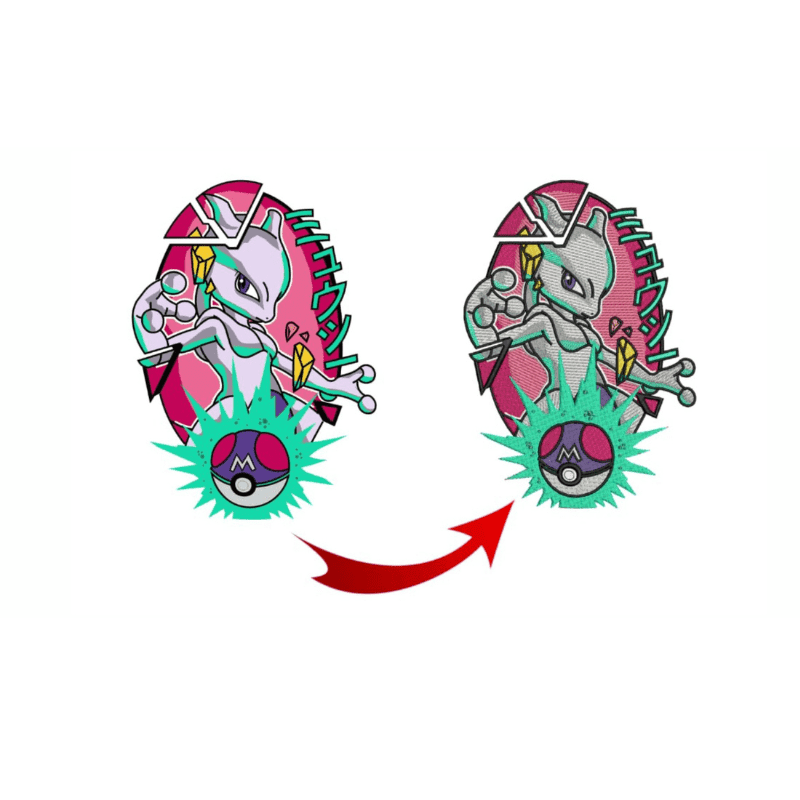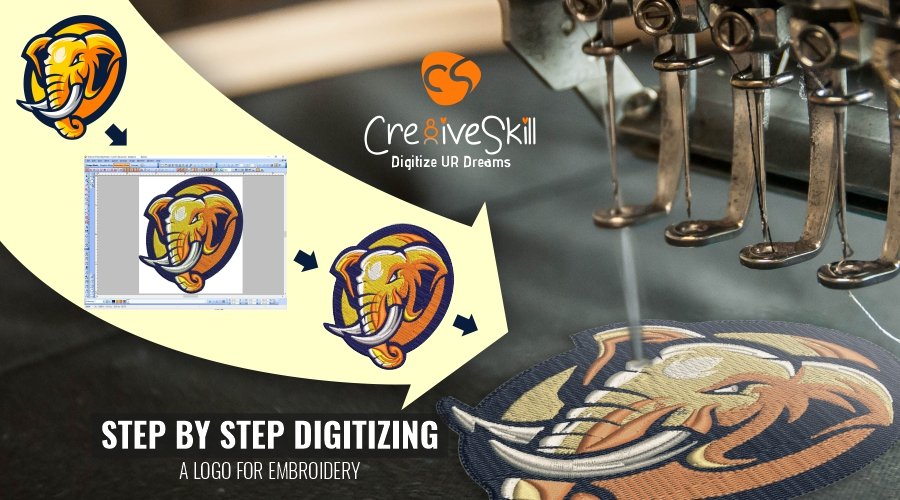Cost Effective Digitizing for Embroidery: Accuracy and Information
Cost Effective Digitizing for Embroidery: Accuracy and Information
Blog Article
Grasping the Needlework Digitizing Process: Your Ultimate Overview
Embroidery digitizing is a careful craft that calls for precision and knowledge to convert intricate styles right into electronic formats for maker needlework. As artisans start this journey to understand the needlework digitizing process, an extensive understanding of the essentials establishes the foundation for excellence. Nevertheless, past the rudimentary understanding exists a world of sophisticated software application, specialized devices, and nuanced strategies waiting to be explored. By diving into the nuances of digitizing, one can unlock a world of innovative possibilities and raise their embroidery jobs to new elevations.

Comprehending Needlework Digitizing Essentials
Needlework digitizing basics develop the structure whereupon complex designs are converted into machine-readable formats for exact sewing. This first action in the needlework digitizing procedure is crucial for ensuring that the last embroidered product is a devoted representation of the initial design. Comprehending needlework digitizing basics includes comprehending crucial ideas such as stitch types, stitch direction, thickness, rug, and pull payment.
Stitch kinds play an essential duty in determining the aesthetic and textural outcome of the embroidered design. By selecting the appropriate stitch kind, whether it be satin, fill, or running stitch, digitizers can achieve the wanted impact and boost the overall top quality of the needlework. In addition, sew instructions affects the circulation and dimension of the layout, while thickness figures out the spacing and protection of the stitches.
Furthermore, padding stitching provides security to the style by securing the textile and stopping distortion during the needlework process. Draw settlement is another vital consideration to neutralize the natural propensity of material to agreement when stitched. Understanding these embroidery digitizing essentials is essential for developing professional-quality embroidered products.
Selecting the Right Digitizing Software Application
Picking the suitable digitizing software is an important decision that considerably influences the performance and quality of the embroidery digitizing procedure. Digitizing for Embroidery. When picking the ideal digitizing software, it is important to take into consideration factors such as the complexity of styles you prepare to develop, the user-friendliness of the software program, the degree of consumer support offered, and the compatibility with your embroidery machine
There are different digitizing software program alternatives readily available in the market, ranging from basic programs for beginners to advanced software for professional digitizers. Some popular choices include Wilcom EmbroideryStudio, Hatch Needlework Software, and PulseID. These software packages use a large range of devices and functions to assist you produce elaborate designs with ease.
Prior to choosing, it is recommended to discover the different software program alternatives via complimentary trials or demos to determine which one ideal matches your needs. In addition, reviewing evaluations and seeking recommendations from knowledgeable digitizers can supply important insights right into the staminas and weaknesses of each software program plan (Digitizing for Embroidery). By carefully reviewing your demands and comparing the attributes of different digitizing software, you can make an educated choice that go to my site boosts your needlework digitizing process
Digitizing Devices and Techniques

Optimizing Layout Settings for Embroidery
Grasping the complexities of style settings is fundamental in achieving optimal cause the needlework digitizing procedure, structure upon the foundation laid by comprehending digitizing devices and strategies. When enhancing style settings for embroidery, it is important to consider factors such as stitch kind, thickness, rug, draw settlement, and registration. Stitch type selection affects the general feel and look of the style, with choices like satin, fill, and running stitches using various appearances and impacts. Density describes the spacing and density of stitches, affecting the layout's insurance coverage and toughness. Correct underlay stitching provides security and prevents fabric distortion, especially for intricate layouts or on stretchy materials. Pull compensation readjusts for material stretch throughout stitching, ensuring exact style replication. Enrollment setups line up various aspects of the design precisely, maintaining total design honesty. By fine-tuning these design setups, embroiderers can enhance the top quality and precision of their embroidered productions.

Troubleshooting Common Digitizing Issues
When coming across usual digitizing problems throughout the embroidery process, it is important to recognize the source and implement efficient remedies quickly. One usual problem is stitch density problems, where stitches might be too thick, creating the fabric to pucker, or also sparse, causing voids in the design. Changing the stitch thickness setups in the digitizing software can help solve this concern.
Another frequent obstacle is string breaks throughout the needlework procedure. This can occur because of numerous factors such as inaccurate tension settings, boring needles, or making use of this hyperlink low-grade thread. Ensuring correct upkeep of the embroidery device, including routine needle adjustments and tension modifications, can lessen the incident of string breaks.
In addition, layout enrollment mistakes can cause misaligned components within the needlework layout. Examining the layout alignment in the digitizing software application and making needed changes prior to sewing can assist in avoiding this problem. By dealing with these common digitizing issues without delay and properly, you can make certain a smoother needlework procedure and high-grade ended up items.
Final Thought
Finally, mastering the embroidery digitizing process requires a strong understanding of the fundamentals, the appropriate option of software application, and knowledge of tools and strategies. Enhancing style settings and repairing typical digitizing issues are crucial action in making sure top notch needlework outcomes. By following these actions faithfully, one can accomplish precision and performance in the digitizing process.
Report this page